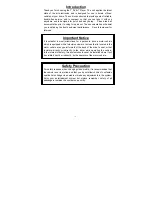
TP0332/2
3.7
LOOP_FILTER and VCAP_BIAS, are compared and the difference between them determines the
VCO frequency. Oscillator tuning is by varicap diodes D402 to D405 (receive oscillator) and D407 to D411
(transmit oscillator). Separate wideband VCOs (Rx first local oscillator - TR409, and Tx oscillator - TR413),
but a common buffer amplifier (TR410, TR414) are used on all bands. Switching between the receiver LO
and the transmitter oscillator is achieved by TR415 and TR412. A cascode amplifier is used to isolate both
VCOs from their respective loads. The Rx oscillator tuned circuit uses M400 in UHF applications and L416
in VHF applications.
The buffered VCO output is applied to the frequency synthesizer, IC401, on both receive and
transmit, and to a PIN diode switch (D422, D423). The latter switches the signal to the first mixer (as
LO1_RX) on receive or to an additional buffer amplifier, TR411, on transmit.
The negative voltage generator (TR402/3, TR405/6 and TR407/8) must generate very little noise if
the VCO performance is not to be degraded. This is achieved by applying the amplified and inverted DAC
output to a filter, D424, R414, C405 and C409.
IC400_B, D and A are used to switch the clock and data inputs for the synthesizer on and off.
Figure 3.5 Frequency Generation Block Diagram
Two point modulation is used to achieve a flat, wide audio response, fast frequency switching and
low power in adjacent channels. Modulation of the synthesizer reference frequency is achieved by phase
modulation of the TCXO output. Since the phase modulator has a limited range and a greater phase
excursion is required at lower transmit frequencies, one of three TCXO to phase modulator division ratios
is used. TR423, TR420 and TR421 form a ramp generator. TR424 to TR426 form a Schmitt trigger to
which the ramp is applied. In the absence of modulation, the output of the Schmitt trigger approximates to
a square wave.
When modulation is applied, the Schmitt trigger switches at a point on the ramp that is related to the
amplitude of the modulating signal. Due to the frequency shaping produced by IC406_A, the synthesizer
IC receives a reference signal with frequency modulation (within the frequency range required).
Table 3.2 Phase Modulator Frequency
Band
Phase Modulator Frequency
E
100kHz
AB and K
200kHz
U, T and R1
400kHz
Modulator
Phase
Clock/Data
Gating
Enable from
Clock, Data,
Fast, Lock,
TCXO
Divider
14,4MHz
Tx Mod 2
from
Baseband
Block
Control
Reference
Synthesizer
Divider
DAC
Control
Tx VCO
Rx First
Secondary
Primary
Synthesizer
Synthesizer
Rx 2nd LO VCO
Loop
Filter
VCO
Buffer
Pin Switch
PA
Buffer
Rx Block
First LO to
Tx Block
To PA on
LO1_EN
Rx PSU and
from
Control
from
Tx Mod I
Baseband
Aux-CP
Aux-LO2
LO VCO
and
Loop Filter
(Rx Block)
Negative
Supply
Generator
Block
Summary of Contents for SRP8000 SERIES
Page 1: ...SERVICE MANUAL TP0332 2 SRP8000 SERIES VHF UHF PORTABLE RADIO...
Page 55: ...TP0332 2 6 5 Figure 6 4 Radio PCB Component Layout Diagram Side 2 MAIN ASSEMBLY SIDE 2 BOTTOM...
Page 57: ...TP0332 2 6 7 Figure 6 6 Radio PCB Circuit Diagram...
Page 58: ...6 8 TP0332 2 Figure 6 7 Power Supplies Circuit Diagram...
Page 59: ...TP0332 2 6 9 Figure 6 8 Receiver Circuit Diagram...
Page 61: ...TP0332 2 6 11 Figure 6 10 Frequency Generation Circuit Diagram...
Page 62: ...6 12 TP0332 2 Figure 6 11 Baseband Circuit Diagram...
Page 63: ...TP0332 2 6 13 Figure 6 12 Control Circuit Diagram...
Page 64: ...6 14 TP0332 2 Figure 6 13 SMART Interface Circuit Diagram...
Page 67: ...TP0332 2 6 17 Figure 6 16 MMI PCB Circuit Diagram...
Page 75: ...TP0332 2 B 3 PARTS LIST Description Part No Remarks Lapel LS Mic complete 0000 242 10001...
















































